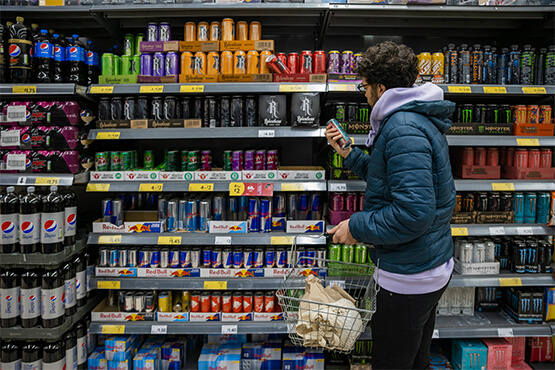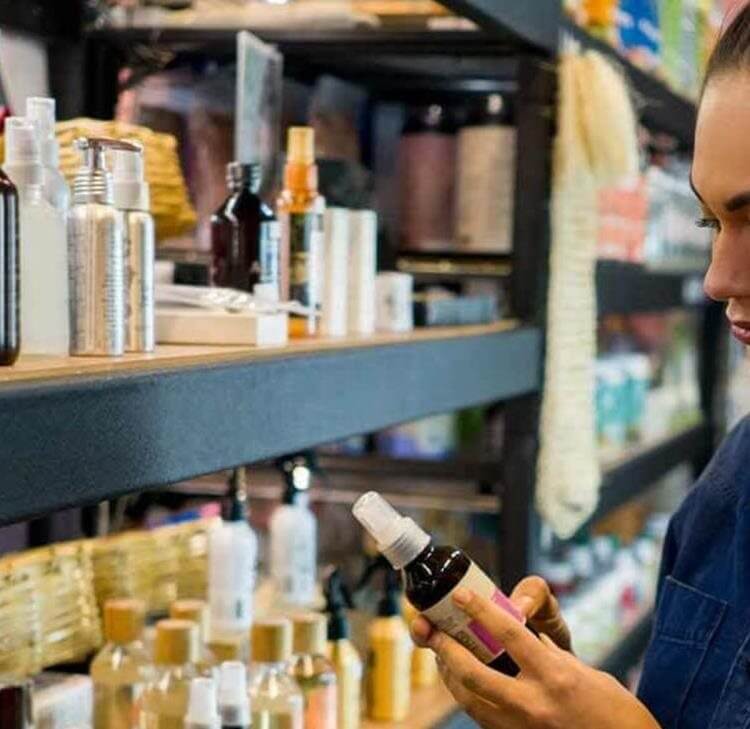The recent rise of at-home spa-style alternative therapies, fuelled in no small way by social media influencers, has led the ASA’s AI-powered Active Ad Monitoring system to flag the numerous claims around the purported benefits of LED face masks.
These made online, either in paid-for social media advertising or on advertisers’ own websites. According to Deep Market Insight, the UK market for LED face masks was worth $22.82 million in 2024, with the value projected to rise to over $70 million by 2033.
This is big business. While LED devices have been applied in medical settings to treat medical conditions and used for many years, the increased commercial availability of products featuring LED, and face masks in particular, throws up challenges when it comes to making efficacy claims.
The regulatory context
Any claim made about a product must be substantiated, and the claim must match the evidence held. In addition, some claims are regulated so they can only be made by products which meet regulatory requirements and have appropriate licences or registrations in place.
Medicinal and medical claims can only be made for a product with a marketing authorisation or that is suitably registered as a medical device. The legal definition of a medicinal claim is that which is presented as having properties of preventing or treating disease in human beings.
Medical devices are those intended by the manufacturer to be used (amongst other things) for the purpose of treating or alleviating disease or modifying the anatomy or a physiological process. In either case, ‘disease’ is widely framed and presenting a product as having a medical or medicinal function without a relevant licence or registration will breach the CAP Code.
The ASA spotlight
On 5 November 2025, the ASA upheld four complaints (brought by itself) against online retailers selling LED face masks, which claimed various benefits that the ASA (in one instance, with the input of the Medicines and Healthcare products Regulatory Agency (MHRA)) believed to stray into the medicinal claims territory, claiming that each product was able to provide a solution to a medical problem.
Project E Beauty LLC & Luyors Retail Inc
Project E Beauty and Luyor Retail Inc, both foreign companies based in Hong Kong and Canada, respectively, were ruled in breach of the CAP Code by the ASA and were instructed not to make medicinal claims for products that did not have the applicable conformity marking and were not registered with the MHRA.
Luyors Retail’s claims that:
“…with 6 specialized light settings, it helps tackle everything from acne… with clinical precision… ”
and Project E Beauty’s claims:
- “Quality at-home LED light therapy can also help reduce…acne…”
- “LED light therapy actually has clinically proven benefits…”;
- “clear acne” and
- “fight signs of … rosacea”
were all ruled non-compliant because claims were made that the products could treat or prevent a medical condition (namely, acne and rosacea); no MHRA licence or registration was found for either product.
Invention Works BV t/a Silk’n
Invention Works BV, based in the Netherlands, was similarly pulled up for claims made on paid-for social media and on its website featuring a video of a woman using an LED face mask with the captions:
“…Finished with the blue light to help treat my acne and scars.”
“Targeted acne-related treatment… precise and targeted treatment to effectively reduce acne-related redness. ”
Invention Works argued that the video was a paid-for Meta ad, in fact, created by a user and reflected her own experience. Furthermore, by avoiding the use of “acne” within their corporate materials, acknowledging that it was a medical condition, and following legal advice and industry guidance, they believed that “acne-related redness” was not a medical condition. It argued that redness was a cosmetic issue, and as such, a beauty (and not medical) product would be entitled to signpost this as a potential benefit.
The ASA took the additional step of contacting the MHRA to determine whether redness related to acne constituted a medical condition, and the statutory regulator confirmed that it did. This meant that the claim fell into the requirement for the product to be registered with the MHRA (which it wasn’t). As such, the complaint was upheld.
Beautaholics Ltd
Beautaholics, a retailer of hair and skincare tools based in Sunderland, made claims around its Rejuvalux LED face mask:
“…it delivers a fully customisable treatment using clinically proven light therapy. Whether you’re targeting…acne – this is advanced skincare made easy”
“…this mask provides targeted solutions for…acne…rosacea…Clinical studies have shown that specific wavelengths of LED light can…reduce acne-causing bacteria.”
While Beautaholics conceded that some words used in their advertising could convey implied medicinal claims around rosacea and acne, it had, prior to launch, obtained UKCA certification, which would have been correct for a purely cosmetic product.
However, as the terms were interpreted as making medicinal claims, the conformity applied wasn’t enough, and the product would have required registration with the MHRA and conformity with medical devices regulations in order to make the claims.
Key takeaways
1. Classification
Ensure you are clear on the classification of the product and what claims can be made. Medicinal claims cannot be made for unlicensed products.
2. Substantiation
All efficacy claims need substantiation. Testimonials will not be considered adequate substantiation of a product's performance overall. Even if the claims made do not go as far as being medicinal and focus on the cosmetic benefits, the ASA will expect robust evidence.
3. The MHRA
For products sitting on the border between medicinal and cosmetic, the ASA will likely reach out to the MHRA for a view. The MHRA also take its own actions to ensure that unlicensed (or prescription-only) medications or unregistered medical devices are not promoted to the general public.
4. All-knowing ASA (powered by AI)
Since 2021, the ASA has utilised the power of artificial intelligence to better deliver effective and responsive regulation of advertising. This means that brands won’t be able to rely on a lack of complaints brought by the market or competitors.
Compliance checklist
- Pre-launch, ensure that the marketing of your product falls within either framework for cosmetic or medicinal products.
- Review all marketing materials in light of where the product falls, following the necessary requirements.
- Ensure all claims are compliant with the CAP Code.
- Post-launch monitor/moderate testimonials from customers, continue to maintain the substantiation for claims made, keep an eye on ASA rulings in your field, as well as any general shifts in the regulatory landscape, to ensure ongoing compliance.
And of course, if you need help with any of the above, our Browne Jacobson advertising team is here is here to support your business.
Contact

Katharine Mason
Principal Associate
katharine.mason@brownejacobson.com
+44 (0)330 045 1382










































